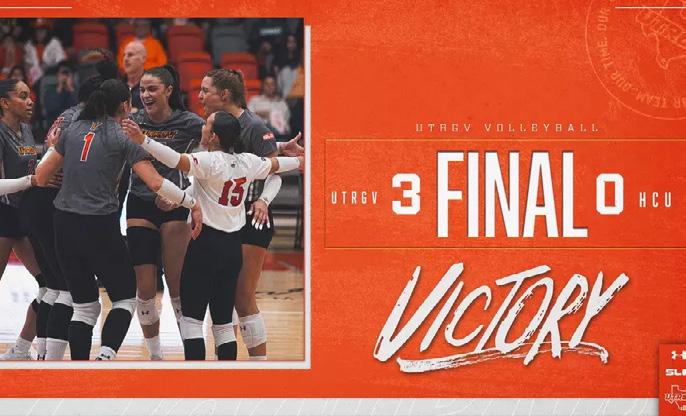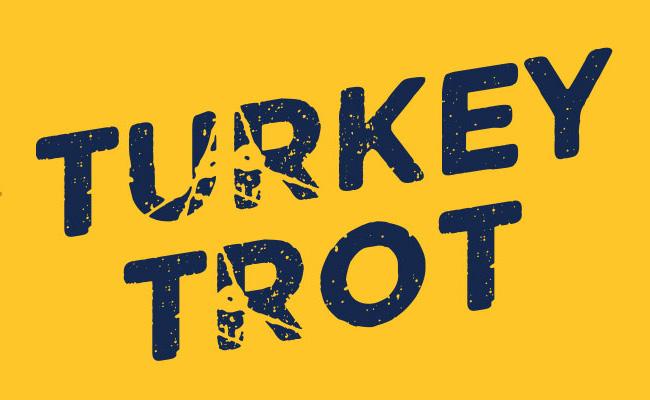¿New to Medicare?
We are independent agents and can help you get Medicare Advantage, Supplement, and Prescription Drug Plans. Call us today for more information.


5500 N. McColl Rd. Ste A, McAllen, Texas 78504
Wednesday, November 20, 2024 FREE

We are independent agents and can help you get Medicare Advantage, Supplement, and Prescription Drug Plans. Call us today for more information.


5500 N. McColl Rd. Ste A, McAllen, Texas 78504
Wednesday, November 20, 2024 FREE

By Kate McGee, The Texas Tribune
“Texas names new higher education chief” was first published by The Texas Tribune, a nonprofit, nonpartisan media organization that informs Texans — and engages with them — about public policy, politics, government and statewide issues.
The Texas Higher Education Coordinating Board named Wynn Rosser as the state’s next commissioner of higher education at a special board meeting Thursday.
The appointment was announced after a unanimous vote of the board. The vote was taken without discussion.
Rosser did not immediately respond to a request for comment.
In a statement Friday, Gov. Greg Abbott celebrated the appointment.
“Dr. Wynn Rosser brings a wealth of experience and knowledge that will help Texas continue to ensure students have access to quality, affordable education so they can succeed in high-demand, good-paying jobs,”
he said. “Texas’ economy and future workforce depend on strong higher education institutions. With Dr. Rosser at the helm, we will further empower young Texans, bolster our highly skilled workforce, and take our state’s continued success to even greater heights.”
Rosser is the president and CEO of the T.L.L. Temple Foundation, a family foundation focused on issues facing rural East Texas. He previously spent a decade running the Greater Texas Foundation. Before that, he worked at Texas A&M University in various teaching and administrative roles.
He holds an associate’s degree from Kilgore College and bachelor’s, master’s and doctoral degrees from Texas A&M University.
“Being selected to serve as Commissioner of Higher Education is an honor, and I look forward to working alongside higher education leaders to support and strengthen Texas higher education” Rosser said in a statement Friday. “Together, we will focus on ensur-
ing that Texas students are prepared for a rapidly changing world, equipped with the skills and knowledge they need to succeed.”
Rosser succeeds Harrison Keller who became commissioner in 2019. Keller oversaw an overhaul of the state’s 60x30 plan, which set a goal that by 2030, 60% of Texans ages 25-34 should have a degree or credential. The plan, now called Building a Talent Strong Texas, expanded the goal to include Texans ages 25-64.
Keller also helped shepherd an overhaul of the state’s community college finance system through the Texas Legislature last year. He left the position in July to become president of the University of North Texas.
The higher ed commissioner serves as the chief executive officer of the Coordinating Board, the state agency with a $2.9 billion budget that oversees Texas’ financial aid programs and helps enact the state’s strategic vision for public higher education. The board, made up of 10 members who are appointed by the governor, helps the commissioner implement the state’s vision for higher education.
Sarah Keyton has served as interim higher education commissioner during the transition. She will remain at the Coordinating Board as deputy commissioner of administration.
The Texas Tribune partners with Open Campus on higher education coverage.
Disclosure: Greater Texas Foundation, Texas A&M University, T.L.L. Temple Foundation and University of North Texas have been financial supporters of The Texas Tribune, a nonprofit, nonpartisan news organization that is funded in part by donations from members, foundations and corporate sponsors. Financial supporters play no role in the Tribune’s journalism. Find a complete list of them here.
This article originally appeared in The Texas Tribune at https://www.texastribune. org/2024/11/14/texas-higher-education-commissioner/.
The Texas Tribune is a member-supported, nonpartisan newsroom informing and engaging Texans on state politics and policy. Learn more at texastribune.org.


The University of Texas Rio Grande Valley (UTRGV) Vaqueros volleyball team broke the program’s overall and average attendance records Saturday in a Southland Conference (SLC) sweep of the Houston Christian (HCU) Huskies at the UTRGV Fieldhouse in the regular season finale.
Page 2

Thanksgiving season is almost here, and what better way to kickstart the holiday spirit than by joining South Texas College’s beloved annual tradition? The Kinesiology Department is excited to host its 19th Annual Turkey Trot on Thursday, November 23, from 7:30 a.m. to 9:00 a.m.—a perfect way to work up an appetite while making a difference in the community!
Page 3
The University of Texas Rio Grande Valley (UTRGV) Vaqueros volleyball team broke the program’s overall and average attendance records Saturday in a Southland Conference (SLC) sweep of the Houston Christian (HCU) Huskies at the UTRGV Fieldhouse in the regular season finale.
Saturday’s crowd grew the season’s overall attendance to 13,386 to secure the new record. UTRGV also broke the average attendance record as it drew 1,339 fans per match through 10 dates.
Senior outside hitter Claudia Lupescu led UTRGV’s (16-10, 12-4 SLC) offense with 14 kills on .424 hitting with 10 digs for her second consecutive double-double. Senior outside hitter Ilana De Assis recorded 10 kills on .304 hitting and sophomore outside hitter Nadine Zech added eight kills with seven digs. Junior Sharyland Pioneer alum Natalie Reyes served a career-high tying four aces as the Vaqueros racked up 10 aces in the match. Sophomore setter Isabella Costantini earned a double-double with 26 assists and 11 digs. Sophomore libero Celianiz Cabranes added 12 digs.
HCU’s (11-16, 8-8 SLC) Audrey
Pearce had 11 kills on .318 hitting and Ana Garza added eight kills. Tatiana Evans had a match-high 14 digs.
The Vaqueros used tough serving to force the Huskies out of rhythm and take control quickly in Set 1. Assis launched a kill down the line then served the first of three UTRGV aces to get the squad on a roll. The Vaqueros forced two quick timeouts by the Huskies as they grew the lead to 18-10 with a good mix of attacks from the outside, right side and back row. UTRGV doubled up HCU at 22-11 following a block from Lupescu and senior right side Perris Key to set up the big finish, and Key slammed a kill from the right side to take the 1-0 lead with a 25-15 set win.
The second set was defined by runs and played much tighter than the first. UTRGV used a 5-0 run to erase an early deficit with frequent Zech kills and a block by Assis and Key. The teams swapped 3-0 runs, but the Vaqueros maintained a lead as the Huskies committed a handful of attack errors. HCU cleaned things up and used a 5-0 run to jump back on top at 17-15, forcing the Vaqueros to call a timeout.
UTRGV responded well after the regroup, stringing together a 3-0 run and
regaining the lead on an ace from Cabranes. Reyes added back-to-back aces to make it 22-20 in favor of the Vaqueros after the teams swapped points. Lupescu ripped a kill to secure the 2-0 advantage and the 25-21 set win.
The Vaqueros came out sharp in the third, quickly jumping out to a 12-3 lead as they played clean offensively and used gritty defense to hold onto momentum. They went on a 6-0 run to start the match and had good variety in the attack to get on a roll. UTRGV’s serving excellence was on full display as Reyes tabbed back-to-back aces and Key dropped another to open the
advantage to 17-6.
Late in the third, sophomore Brownsville Veterans Memorial alum Elise Fourt assisted Lupescu and Zech with blocks to aid a 3-0 run, giving UTRGV a 22-9 lead and tons of momentum. Sophomore Jasmine Allen made her home debut in the third set, achieving her goal of playing on the same court as her father, men’s basketball alum JeRon Allen (1996-98). Key secured the win with a kill from the middle in her final home match at 25-12.
Up next for UTRGV will be the SLC Volleyball Championship in Hammond, Louisiana from Nov. 22-24.




Thanksgiving season is almost here, and what better way to kickstart the holiday spirit than by joining South Texas College’s beloved annual tradition? The Kinesiology Department is excited to host its 19th Annual Turkey Trot on Thursday, November 23, from 7:30 a.m. to 9:00 a.m.—a perfect way to work up an appetite while making a difference in the community!
Event Highlights:
Date & Time: Thursday, November 23, 2023
| 7:30 a.m. - 9:00 a.m.
Location: South Texas College, Student Union - Building U (packet pickup)
Admission: $10 donation to support the South Texas College Student Food Pantry Packet Pickup: Event day from 6:30 a.m. to 7:30 a.m.
Run/Walk Details:
Participants will embark on a 2.2-mile course, starting at 7:30 a.m. Whether you’re




a competitive runner or prefer a leisurely walk, the Turkey Trot is open to everyone looking to stay active and have fun.
What’s in it for You?
FREE T-shirts & Goodie Bags: Limited to the first 250 participants—be sure to arrive early!
Turkey Prizes: Awarded to the top male and female finishers.
Community Impact: Your $10 admission fee goes directly to supporting the South Texas College Student Food Pantry.
Since its inception in 2005, the Turkey Trot has been more than just a fitness event; it’s a way for the community to come together and support a meaningful cause. In past years, participants have contributed over 20,000 pounds of canned food donations. This year, we’re shifting our focus to monetary donations to better assist students in need.
This event isn’t just about burning off pre-Thanksgiving calories; it’s about fostering community spirit and making a
difference in the lives of students facing food insecurity.
Don’t miss your chance to be a part of this cherished tradition. To learn more and register, visit the South Texas College Turkey Trot page. Lace up your sneakers, bring your friends, and get ready to gobble up the fun on November 23!
Happy Thanksgiving, and see you at the starting line!


Depressionsymptoms can be hard to manage, especially for people with treatment-resistant depression, a persistent and severe form of the disorder. Fortunately, new therapies are emerging for such hard-to-treat conditions. One of these is the medication ketamine, which numerous NIMH-funded studies have shown has fact-acting and lasting effects in people with mood disorders like depression.
The discovery of ketamine has been a game changer for people with severe depression, who often need rapid relief from life-threatening symptoms. Whereas most antidepressants take weeks or months to work, ketamine works within hours to strongly reduce depression symptoms in people for whom other treatments have not worked.
Despite ketamine’s effectiveness as an antidepressant, serious concerns limit its use, including problematic side effects and a high risk of misuse. To address these concerns, the National Institutes of Health (NIH) is invested in finding medications that capitalize on the therapeutic effects of ketamine while avoiding its negative ones.
What did the researchers look at in the study?
New research funded through the NIH Blueprint Neurotherapeutics Network for Small Molecules program examined a novel ketamine-related medication known as RRHNK. RR-HNK is a metabolite , or byproduct, of ketamine left over as the body breaks it down. RR-HNK showed antidepressant effects in preclinical studies with animals , but it had not yet been tested in humans.
The study involved a broad collaboration of researchers in the intramural programs at NIH’s National Institute of Mental Health, National Center for Advancing Translational
Sciences, and National Institute on Aging; the Duke University and the University of Maryland School of Medicine; and other national and international institutions.
This study examined the safety, tolerability, pharmacokinetics (how the drug moves through the body), and pharmacodynamics (how the drug affects the body) of RR-HNK for the first time in humans.
Participants were healthy adults between 18–65 years. A total of 74 people participated across three randomized trials: 55 received RR-HNK and 19 received an inactive placebo. Both the medication and placebo were given intravenously, with participants and researchers unaware of which group the participants were in.
• In Trial 1, participants received one of six dose levels of RR-HNK a single time.
• In Trial 2, participants received one of two dose levels of RR-HNK four times over 2 weeks.
• In Trial 3, participants received a single dose of RR-HNK, and their cerebrospinal fluid (a liquid surrounding the brain and spinal cord) was collected.
The study’s primary aim was to determine if the medication is safe by first testing it in healthy adults without a diagnosed mental health condition. Throughout the study, the researchers closely monitored for adverse events, such as negative side effects. The comprehensive safety profile included physical examinations; laboratory results; vital signs; electrocardiograms of heart activity; and ratings of mood, suicide risk, and dissociation and sedation symptoms. Additionally, participants were asked to tell study staff if
they experienced any concerns or side effects at any point.
The researchers also collected blood and urine samples from all participants before, during, and after receiving the medication. These samples and the cerebrospinal fluid collected in Trial 3 were used to check whether the medication entered the body and the brain.
As a final exploratory step, the researchers used brain imaging to examine participants’ gamma oscillations (a type of brain wave) before and after the medication. This measure of the brain’s response to stimuli is one of the few available biomarkers of a medication’s effects on the brain.
RR-HNK revealed itself to be exceptionally safe, causing no serious adverse events and only mild side effects that resolved quickly without care. Participants also reported no symptoms of sedation or dissociation. The positive safety profile was maintained at all doses tested and after multiple doses. Together, the results indicate that RR-HNK is safe and tolerable, with limited abuse or misuse potential.
Cerebrospinal fluid confirmed that RRHNK entered the brain and remained at detectable levels several hours after administration. Results further showed a dose-proportional response to the medication, meaning that at higher levels of RR-HNK, the amount of the substance in the body also increased at the same rate. A predictable relationship between the amount of RR-HNK given and the amount of RR-HNK in the bloodstream is important for the clinical efficacy of the medication, allowing doctors and researchers to accurately calibrate doses to a
person’s specific level and type of symptoms.
In the test of brain activity, some participants who received low to moderate doses of RR-HNK, but not those who received high doses or the placebo, showed an increase in the power of gamma oscillations. Preliminary evidence that RR-HNK produces a change in brain activity strengthens the case for its use as an antidepressant and provides a clinical biomarker for measuring whether it works in future research. However, there was large variability in the results and, given the small number of participants, the researchers caution against drawing firm conclusions from these findings.
What do the results mean?
This study offers critical insight into the safety, tolerability, and effects of RR-HNK in a diverse population of healthy adults. Findings from this early stage study demonstrate that the ketamine metabolite does not cause ketamine’s negative side effects and is safe for use in humans. The results also help set dosing parameters for its use in future research and treatment.
These data, particularly a strong safety profile, support the progression into the next phase of research aimed at developing new therapies for people with hard-to-treat mental disorders. Despite the small size of each trial, which makes it difficult to interpret some of the results, the findings hold promise for the future of mental health treatment. This study is a critical early step in NIMH’s mission to improve the treatment of mental illnesses through research, setting the stage for clinical trials that test whether RR-HNK effectively treats depression and other disorders.












